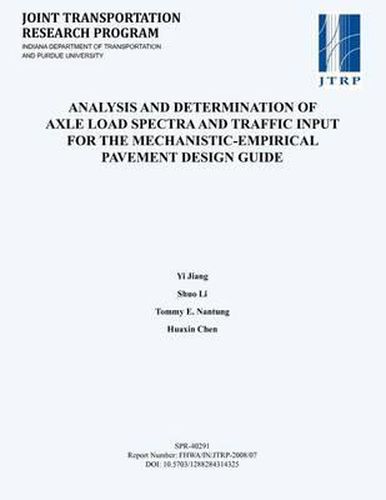Readings Newsletter
Become a Readings Member to make your shopping experience even easier.
Sign in or sign up for free!
You’re not far away from qualifying for FREE standard shipping within Australia
You’ve qualified for FREE standard shipping within Australia
The cart is loading…






The values of equivalent single axle loads (ESAL) have been used to represent the vehicle loads in pavement design. To improve the pavement design procedures, a new method, called the Mechanistic-Empirical Pavement Design Guide (MEPDG), has been developed to use the axle load spectra to represent the vehicle loads in pavement design. These spectra represent the percentage of the total axle applications within each load interval for single, tandem, tridem, and quad axles. Using axle load spectra as the traffic input, the MEPDG method is able to analyze the impacts of varying traffic loads on pavement and provide an optimal pavement structure design. In addition, the new method can be used to analyze the effects of materials and the impacts of seasons, to compare rehabilitation strategies, and to perform forensic analyses of pavement conditions. The MEPDG utilizes mechanistic-empirical approaches to realistically characterize inservice pavements and allows the full integration of vehicular traffic loadings, climatic features, soil characteristics, and paving materials properties into the detailed analysis of pavement structural behaviors and the resulting pavement performance.
$9.00 standard shipping within Australia
FREE standard shipping within Australia for orders over $100.00
Express & International shipping calculated at checkout
The values of equivalent single axle loads (ESAL) have been used to represent the vehicle loads in pavement design. To improve the pavement design procedures, a new method, called the Mechanistic-Empirical Pavement Design Guide (MEPDG), has been developed to use the axle load spectra to represent the vehicle loads in pavement design. These spectra represent the percentage of the total axle applications within each load interval for single, tandem, tridem, and quad axles. Using axle load spectra as the traffic input, the MEPDG method is able to analyze the impacts of varying traffic loads on pavement and provide an optimal pavement structure design. In addition, the new method can be used to analyze the effects of materials and the impacts of seasons, to compare rehabilitation strategies, and to perform forensic analyses of pavement conditions. The MEPDG utilizes mechanistic-empirical approaches to realistically characterize inservice pavements and allows the full integration of vehicular traffic loadings, climatic features, soil characteristics, and paving materials properties into the detailed analysis of pavement structural behaviors and the resulting pavement performance.